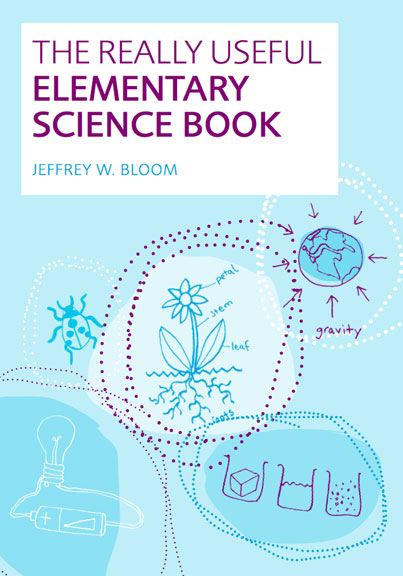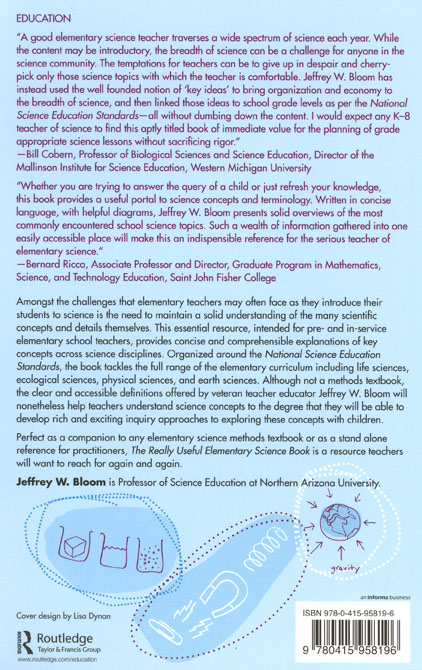The Really Useful Elementary Science Book
by
Jeffrey W. Bloom
Publisher: Routledge Publishers (a Taylor & Francis Company), New York
(2011)
Available as of mid-August, 2010
Available as of mid-August, 2010


Table of Contents
Section 1 — Introduction
Section 2 — Life Processes and Systems
Key Idea 2.1 Characteristics and Basics Needs of Living Things
Key Idea 2.2 Levels of Organization
Key Idea 2.3 Development of Complexity in Animals
Key Idea 2.4 Human Characteristics
Key Idea 2.5 Characteristics of Plants
Key Idea 2.6 The Development of Complexity in Plants
Key Idea 2.7 Issues of Survival for Living Things
Key Idea 2.8 Human Survival and Health
Key Idea 2.9 Growth and Development
Key Idea 2.10 The Theory of Evolution
Key Idea 2.11 Replication and Genetics
Key Idea 2.12 Variety of Life
Resources and References
Section 3 — Ecology and the Environment
Key Idea 3.1 The Gaia Hypothesis — The Earth System
Key Idea 3.2 Levels of Organization
Key Idea 3.3 Types of Ecosystems
Key Idea 3.4 Features of the Biosphere and Its Ecosystems
Key Idea 3.5 Dynamics of Ecological Systems or Ecosystems
Key Idea 3.6 Sequences and Cycles — Life, Energy, and Materials
Resources and References
Section 4 — Physical Sciences
Key Idea 4.1 Mass and Weight
Key Idea 4.2 Force and Motion
Key Idea 4.3 Energy, Work, Simple Machines, and Other Mechanical Concepts
Key Idea 4.4 Matter: Atoms, Molecules, Solids, Liquids, and Gases
Key Idea 4.5 Waves, Sound, and Light
Key Idea 4.6 Temperature, Heat, and Thermodynamics
Key Idea 4.7 Electrical Phenomena
Resources and References
Section 5 — Earth and Space Sciences
Key Idea 5.1 The Structure of the Earth and Earth System
Key Idea 5.2 Earth Features
Key Idea 5.3 Earth Materials and their Properties
Key Idea 5.4 The History of the Earth
Key Idea 5.5 Climate and Weather
Key Idea 5.6 Earth, Moon, and Solar System
References and Resources
